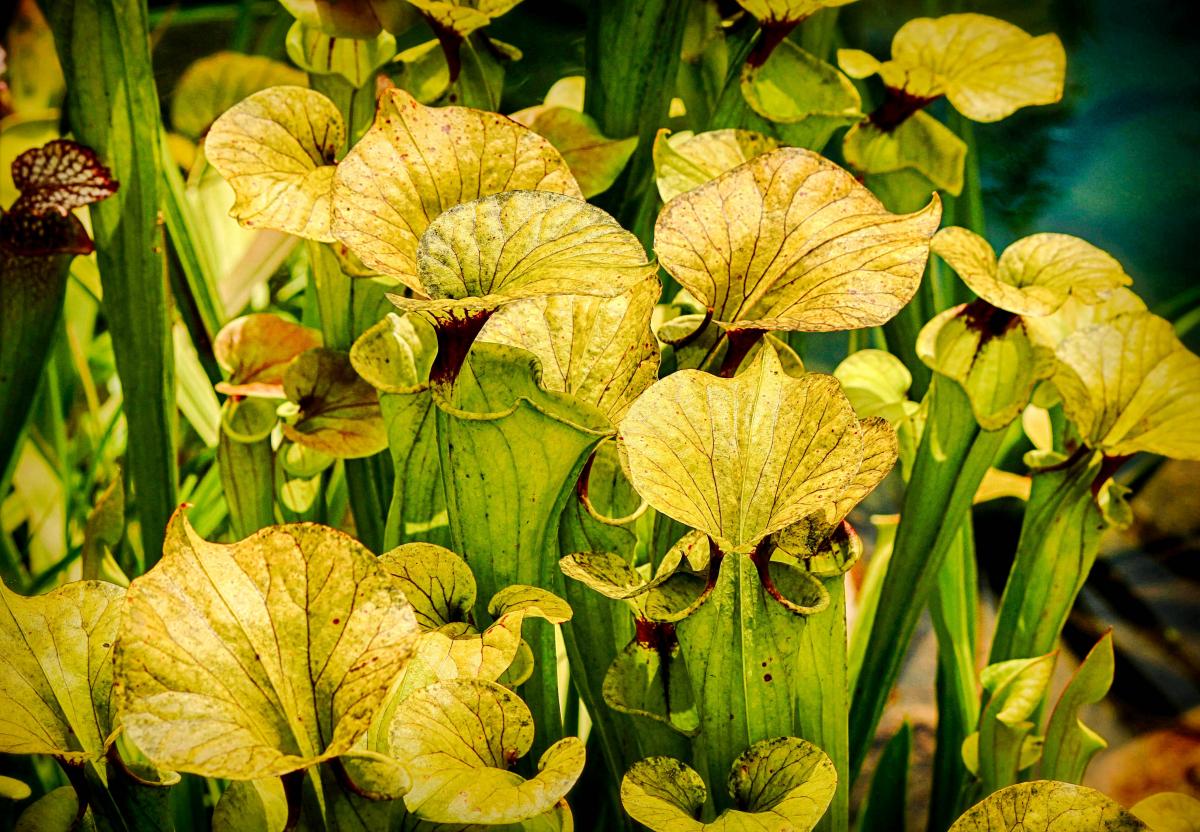
Carnivorous plants are very curious: they look like ordinary plants, totally harmless, but in reality they survive thanks to the nutrients they obtain from the bodies of their victims. For this reason, when growing them they should not be fertilized, since they are not prepared to be fed directly and, in fact, fertilizers can burn the roots.
The growth rate varies from one species to another. For example, the sarracenia are fast, whereas the Cephalotus are rather slow. However, Why are there carnivorous plants?
The carnivores find very few nutrients in the soil in which they liveThat is why they developed different types of traps that mainly trap insects, although in certain species, such as the Nepenthes attenboroughii, drowned rodents have been found.
These mechanisms were first studied by Charles Darwin, who published the first treatise on this subject in 1875. But now we know that although the lineage of these plants separated more than 100 million years ago, all of them developed the same methods to digest the prey they caught.
This only means one thing: that although they live in America, Asia or Australia, they are plants that have found the same solution to become carnivorous: tailor genes and certain proteins that previously served to give them protection against some microorganisms that cause diseases, assigning them a new function, that of digesting the bodies of their victims. And how do they do it?
How do carnivorous plants catch and digest their prey?
Each genus of carnivorous plant produces its own trap: some have mucilage on their leaves, which is a watery substance that is very sticky for small insects; others have jugs filled with liquid and a kind of hairs inside (on the outermost part) that point downwards; others instead have traps in the form of vases with a small hat. But what is common in them is the aroma they emit and that is only detectable by insects, that they are very attracted and that they end up being deceived by the carnivores, and often caught in their jaws.
Once the insect reaches a, either in a mouth of a Venus flytrap (Dionaea muscipula), in a jar-type trap of the sarracenia or Heliamphora, or in the mucilage of the leaves of some sundew for example, digestion begins: the glands of the plants begin to secrete digestive enzymes that what they do is, first, decompose the body of the prey, and then absorb it until in the end only the exoskeleton remains.
How is the feeding of carnivorous plants?
Carnivorous plants They basically feed on mosquitoes, flies, ants and spiders. Depending on the size of the trap it is also sometimes possible to find small rodents, but this is not usual. Also, you should know that each species has its favorites.
For example, looking at mine, I can tell you that sarracenia tend to feed more on flying insects like flies and even bees or wasps; Dionaea prefer flies; and the sunshades and Pinguiculas, mosquitoes and moths.
They should never be put on compost or fertilizer. At most, some insect that is alive and has not been treated with insecticide, once a week or every 15 days. But if it is grown outdoors, it is not necessary to worry about this as they will hunt their prey alone.
Another thing that should not be done is to plant them in fertile substrates. If we want them to last a few years, it is necessary to use specific substrates for carnivorous plants (for sale here), or that we make this mixture: blond peat with perlite (for sale here) equal parts. Other options are sphagnum moss (for sale here) with 30% perlite, or blond peat with 50% quartz sand.
So, as you can see, carnivorous plants are as they are today because that is how they have adapted to an environment in which they do not find all the nutrients they need to survive.